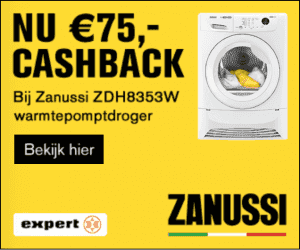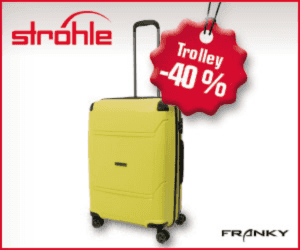Effectively using dynamic banners for retargeting and prospecting

The online behaviour of people is becoming more and more volatile and less predictable. Online competition is killing and the changing privacy regulations more and more limit the options to target people.
Did you know that:
– More than 90% of the people visiting a web shop for the first time, leave that web shop without placing an order…
– 49% of the visitors minimally needs 2 visits (on average) before placing an order…
– 70% of the shopping carts is abandoned without completing the order process…
Reaching your target audience is good. Reaching your target audience in a powerful way, convincing them to take action, is even better. A targeted dynamic retargeting banner campaign can be a powerful tool for you to achieve your goals. In fact, over the past decade, dynamic remarketing has evolved as one of the most powerful marketing tools of the online marketeer.
How do dynamic retargeting banners work?
With dynamic retargeting you create unique ads for each individual website visitor. First of all you need to have a banner design in which you decide which parts of you banner ad will be filled dynamically. The next step is to create a so called ‘feed’ in which all dynamic details have been defined. For instance, for a product you define unique ID, price, image, etc. These details will be collected from the feed and placed in the dynamic banner.
When you use dynamic banners for retargeting purposes, you should make sure that you’ve placed a dynamic marketing tag to your website. As soon as a visitor has given permission for placing cookies, the visitor automatically will be added to a so called remarketing list and be linked to your feed.
The dynamic banner ad will be filled in real time with unique content, based on the visitors preferences. In most cases machine learning technology is used that analyses individual behaviour of your website visitors to figure out which (creative) elements will entice a former visitor to return and make a purchase. The unique content can be the last viewed products on your website, a link to the (filled) shopping cart but as well special offers that refer to a physical location nearby your prospects location where he can complete the order.
In most cases, dynamic retargeting banners are used to convince people to take action and complete the order. Another way of using dynamic retargeting is for cross- and upselling. There are endless possibilities. Imagine people that did buy a printer from your web shop, but no cartridges. Through dynamic retargeting you can upsell the right type of cartridges for this newly bought printer. Another way of using dynamic retargeting is for branding purposes. It’s a perfect instrument to keep your brand top of mind.
Over the past years dynamic retargeting has evolved as the most cost efficient way of advertising. Main reason for this is that you target a ‘warm’ target audience, i.e. people that have been in touch with your brand, products or services. Combine this with the fact that you have information on the behaviour of this group and are able to do them an offer suited to their needs. Although the general click rate on retargeting ads is not that high, the value of the clicks is very high, because the conversion on these type of ads is rather high.
Dynamic bannering and the adjusted privacy regulation (GDPR)
The use of retargeting banners requires cookies to be installed on the device of your prospect. With the recently enhanced privacy regulation (GDPR) you’re only allowed to install cookies after the user has given permission for placing them. Not every visitor on your website is as enthusiastic to give that permission. Consequently you’ll have to be creative to seduce your visitor to give permission for installing cookies (please note: the checkboxes in your cookie banner may not be pre-filled).
Looking at it positively, this offers opportunities: these visitors that do give permission to install cookies are qualified. You can see them as warm leads. By accepting your cookies, they show they are open for receiving relevant offers from your side. Your visitor will be more open for your offers. In fact, accepting cookies is an expression of confidence in your website!
After the visitor has given permission for installing your cookies, you’re able to read his or her online behaviour on your website and use this information for showing effective dynamic retargeting banner ads. The enhanced privacy regulation also has consequences for retargeting your existing customers. In order to reach them with retargeting banners, you need to add them to a so called remarketing list on Google, Facebook, etc. To be able to do this legally, you need to have their permission for adding them to such kind of lists.
Dynamic banners and prospecting
Maybe you’re wondering if the enhanced privacy legislation has destroyed the concept op dynamic bannering. The answer is no! Even though most of the dynamic banner campaigns are aimed at retargeting, there is still a large playing field left for effectively spreading your marketing message dynamically. The average person is used to see online banner ads. In general they tend to value relevant ads higher than irrelevant ads and even without having permission to install cookies and collect information about the online behaviour of your prospect, you’re able to make your marketing message relevant.
Think about integrating real-time weather data in your banner add when you’re a company selling sun protection products or outdoor clothing. Or integrating a countdown timer for promoting an event on a special date or promoting a discount offer with an end date. You could integrate real time stock information if you’re selling financial products and services. With some creativity, the possibilities to integrate relevant dynamic information in your banners are endless.
Compared to a few years ago, the modern dynamic banner has a strong focus on the creative concept. Of course, it often still shows product and price, but besides that there are a lot of elements that can be added dynamically. Among others, the animation is adjustable and modern campaigns can be enriched with a broad range of interactive elements. Furthermore, dynamic bannering allows to focus on different aspects of your service during different moments of the day. For example, a company like Bol.com emphasizes the aspect of ‘same day delivery’ at week days before noon, whilst on Saturdays they place the emphasis on ‘delivery on Sunday’.
The future of dynamic bannering
Developments in dynamic bannering are expected to continue in the future. In the end this will result in presenting dynamic banner ads that are more and more relevant for the target audience and this more and more effective. When you’re allowed to install cookies, you’ll be able to reach your target group in a very specific and relevant way. But even without information about the online behaviour of your target group, there are plenty of options left to create relevant dynamic banners campaigns.
Some examples
Below you find some examples of dynamic banners that we’ve created before:
More information on dynamic bannering?
Do you want to know more about creating online banners for your display campaign? Call Lars at: +31 (0)168 476 144 or send us an email. We’re happy to help!





